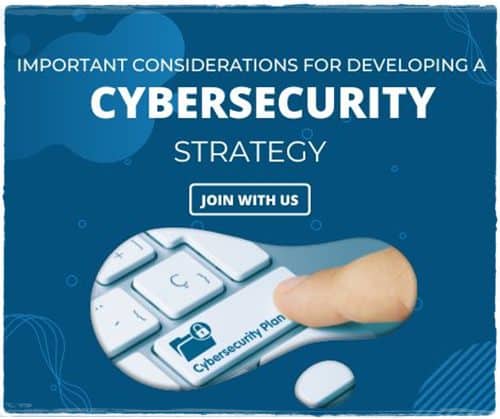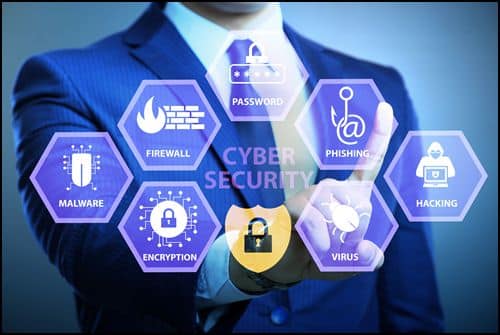
The Internet of Things (IoT) is pivotal in facilitating communication in modern society. IoT has been a disruptive breakthrough that is positively transforming the globe. Social networking, digital marketing, e-commerce, and internet banking are just a few of the IT advances that benefited from the IoT’s growth.
Individuals and businesses have become very dependent on the Internet of Things. However, despite the benefits of IoT, there has been an upsurge in cybersecurity attacks, making IoT unsafe. Therefore, you must take proactive measures to safeguard yourself from any threats.
Nowadays, you can’t afford to be ignorant of the imminent threat of cyber hackers. Cybercriminals have become sophisticated in attacking individuals and businesses. Thankfully, people are becoming increasingly conscious of the significance of cybersecurity. Businesses, however, have a greater incentive to invest in cybersecurity because they are common targets for cybercriminals.
Organizations must establish a cybersecurity strategy that details how they intend to fight against cyberattacks. Every business will likely have a unique plan since every organization has specific IT security needs. What matters most is crafting an effective cybersecurity strategy.
Developing said strategy, however, isn’t easy. Cybersecurity experts can assist by helping you establish a tailored strategy for your organization. With that said, here are some important considerations for developing a cybersecurity strategy.
1. Security Risk Assessment

A risk assessment will require several key individuals in the organization to collaborate and figure out the security status of the business. This is where the IT departments interact with department managers to figure out the best ways to secure the organization’s systems. It will also help IT staff prioritize specific data types so they can attribute the necessary resources to protect that data.
2. Vulnerability Testing

Vulnerability testing is essential because it allows you to find weak points in your systems or networks. Ideally, vulnerability testing should be an ongoing process. This is because you need to identify potential vulnerabilities before any cyber attacker does. Knowing your system’s vulnerabilities allows you to patch them up to secure your systems.
You may put your systems to the test by simulating a real-world hack and observing how your current systems handle the attack. IT experts will know which simulations to perform based on your IT and network infrastructure. Alternatively, you could also use penetration testing. Results or feedback from these tests will allow you to set up systems that can quickly monitor and detect potential threats.
3. Cybersecurity Policies

Cybersecurity policies are established to protect data and information. A business could have a single cybersecurity policy with several sub-policies pertinent to every other part of the organization. Examples of sub-policies may include data protection and data privacy policies.
Security policies are vital because they make employees more accountable. Since these policies are enforceable, employees are expected to conduct themselves within the parameters outlined in the specific policies.
You must establish a habit of reviewing security policies regularly. The reason is that cyber threats are continuously evolving, which means that policies that worked three months ago may not work today. That’s how fast things can change.
Furthermore, documenting the cybersecurity policies will be extremely helpful for any developers or programmers you may work with in the future. They can use this information to establish systems according to your cybersecurity policy. When they’ve completed a project, they can deploy the new system and provide proof that it complies with the stipulated policies.
4. Cybersecurity Awareness

The biggest cybersecurity threats are internal. Cyber hackers may gain access to your company through the online activities of an unsuspecting employee. Phishing emails are a common scam deployed by these hackers. If an employee opens a phishing email, they may unwittingly give easy access to a hacker. Therefore, it’s crucial to educate employees about the importance of cybersecurity.
In addition to developing a security policy, you must educate employees on how to securely operate your systems, software, or hardware. When equipped with this knowledge, they can conduct themselves more carefully, whether online or offline. If employees know how to set strong passwords and identify a phishing email, an unsafe website, or suspicious links, they’ll be able to protect themselves and your company. A cybersecurity strategy might be incomplete if it doesn’t emphasize building a culture of cybersecurity awareness in the organization.
5. Investing In New Technology
It’s not enough to create a cybersecurity strategy. It would be best to consider the system and network upgrades you may have to make to implement your strategy.
Certain technologies will go obsolete at some point. Technology that might have been ground-breaking ten years ago may be very flawed in current times. Antivirus software is a good example. Outdated antivirus software will not do a good job of protecting you against advanced cyberattacks. This shouldn’t come as a surprise since older technologies lack the security features and patches that newer systems possess. Furthermore, newer technologies also tend to be more powerful and efficient.
As a result, consider replacing parts of your IT infrastructure if you want to remain productive. Antivirus and firewall systems are essential in any cybersecurity strategy, and you must ensure they’re always up to date. You can’t afford to leave a stone unturned regarding cybersecurity. If you ignore firmware updates, you’re putting yourself at risk. Ensure that your security policies strongly affirm the importance of updating all systems and servers.
6. Disaster Response And Recovery
A disaster recovery plan is crucial to any successful cybersecurity strategy. This outlines how you will respond in the event of a breach. Even though you might have established sound policies and strategies, it’s still prudent to have a disaster response plan. Cyber attackers may exploit loopholes you were oblivious to, so it’s best to stay ready.
This plan will detail each person’s responsibility in the event of a breach. It ensures that they will know what to do when an attack occurs. Swift response time is crucial in such situations. An organized effort to stop a breach quickly will ensure that minimal damage is done. The sooner you stop the attack, the sooner you can get your systems going again.
Conclusion
Cybersecurity is something that every organization should consider investing in. While you may not want to press the panic button, taking the initiative to secure your business would be wise. The first step is creating a cybersecurity strategy. You may have to review different parts of the strategy over time. For example, you may have to check your disaster response plan if you experience a breach to identify the vulnerability that caused it. Implementing the right cybersecurity strategies will require proactivity. But if you partner with a good cybersecurity expert, they should be able to help you through the entire process
Leave a Reply
You must be logged in to post a comment.